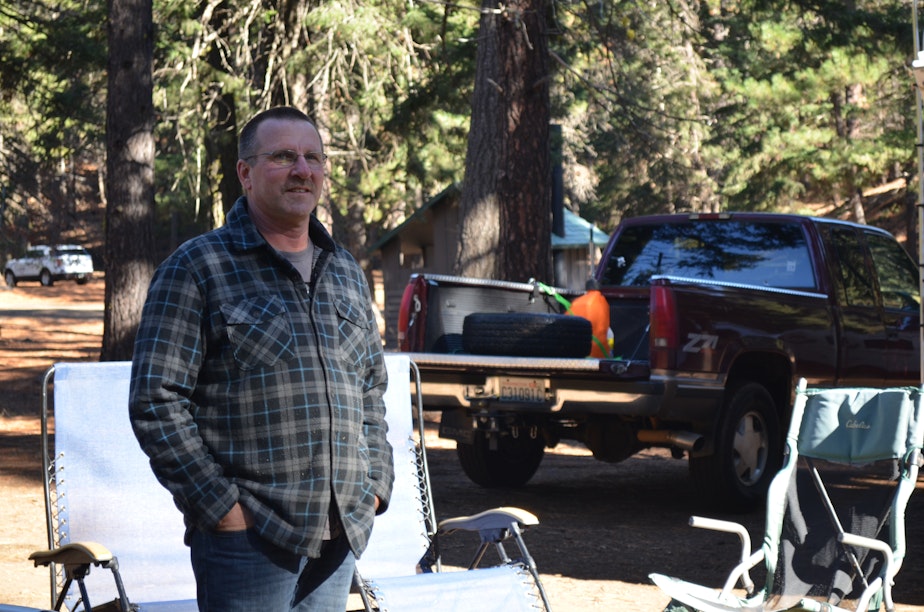Seattle skiers want to take over this 'bro forest'
On a crisp Friday morning in early fall, the campground known as Indian Camp is filled with RVs and motorcycles and smells of campfire.
Four men drink coffee around a smoldering fire. They are from Maple Valley and North Bend, and for nearly 15 years they’ve been coming together out to the Teanaway Valley, just off I-90 on the eastern flank of the Cascades. Their plan is to spend a week and a half camping, hunting and riding their motorcycles up and down trails.
“This is like a retreat,” said Mark Seiser.
“Yeah,” his friend Kevin Aman said. “The city life, let it go, and just kind of enjoy nature and each other.”
For decades, hunters, motorcyclists and snowmobilers have had the run of the Teanaway Valley. But changes are coming. In 2013, the state Legislature established the Teanaway as Washington’s first “community forest”—a forest in which the community would work together with the government to make management decisions.
Over the past five years, the agencies responsible for the forest have worked with a citizen group to create a recreation plan for the forest. That plan is open for public comment until November 7, and forest managers aim to start implementing as soon as early December.
Sponsored
Public comments on various drafts of the plan have all focused on the issue of motorized versus non-motorized use of the trails.
“Need more non-motorized trail (groomed or just a corridor),” wrote one commenter in support of more cross country skiing uninterrupted by snowmobiles.
People who like to ride snowmobiles and motorcycles—like the four friends at Indian Camp—are nervous.
“Motorcycle single-track is a big issue that’s in front of the committee or whatever right now,” Seiser said. “There’s a lot of people trying to shut all that down.”

Sponsored
“We have a gentleman up here in this campground that’s been coming up here—I think this is his 54th year,” Aman said. “You take that away from him and his family—it’s a kind of heritage thing that they do every year. I just don’t agree with that.”
Doug McClelland, a recreation planner for the Department of Natural Resources, said those fears are overblown, because motorcycles will be able to continue to use some of the trails in the forest.
“We’d work to improve [those trails] because they’re not very sustainable,” McClelland said. “They’re in the river.”
That said, McClelland said, “the primary use [of the forest] would be non-motorized.”
Sponsored
The idea is for cross country skiers, hikers, mountain bikers, and bird watchers to have access to places where they can enjoy the forest without being interrupted by snowmobilers, motorcyclists, and hunters. The recreation plan also adds routes that go directly into nearby communities, such as Roslyn and Cle Elum, to encourage recreationists to spend money in those towns.
“We hope they start in Cle Elum or Ronald or Roslyn and buy some coffee or get some gas or go to an outfitter store and then hike on over,” McClelland said.
McClelland said the plan is also to make the forest safer.
“We need to make [the campgrounds] a safer, family-friendly place to come and camp,” he said, “and add better restrooms and more defined parking and better fire rings and bigger picnic tables.”
Back at Indian Camp, Seiser said he sees these changes as a slippery slope.
Sponsored
“When the whole community forest idea came about,” he said, “the first thing I said was, ‘Well, it’ll be a matter of 10 years, and they’ll start shutting stuff down. They’ll start kicking people out. And, you know, pretty soon hunting will be done.’”
McClelland said that’s not the plan.
The Teanaway Valley “is 50,000 acres, which is really large,” he said. “We want to make it fit for all.”




